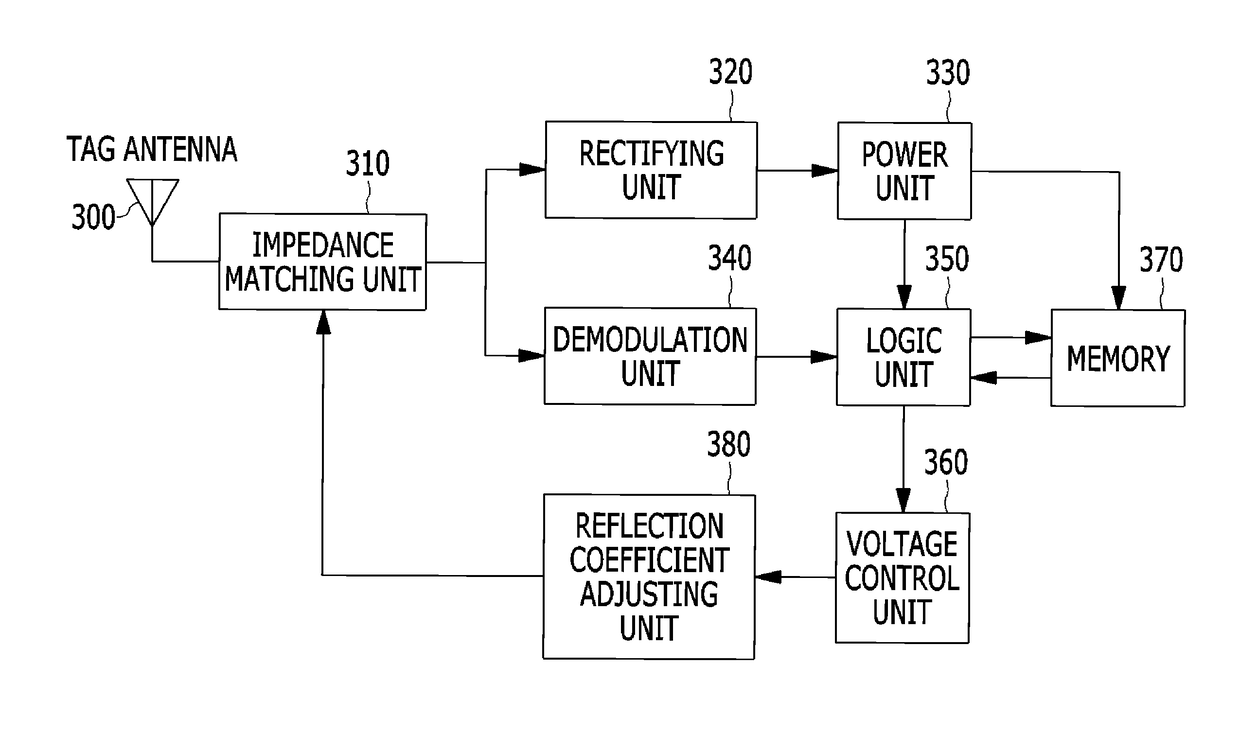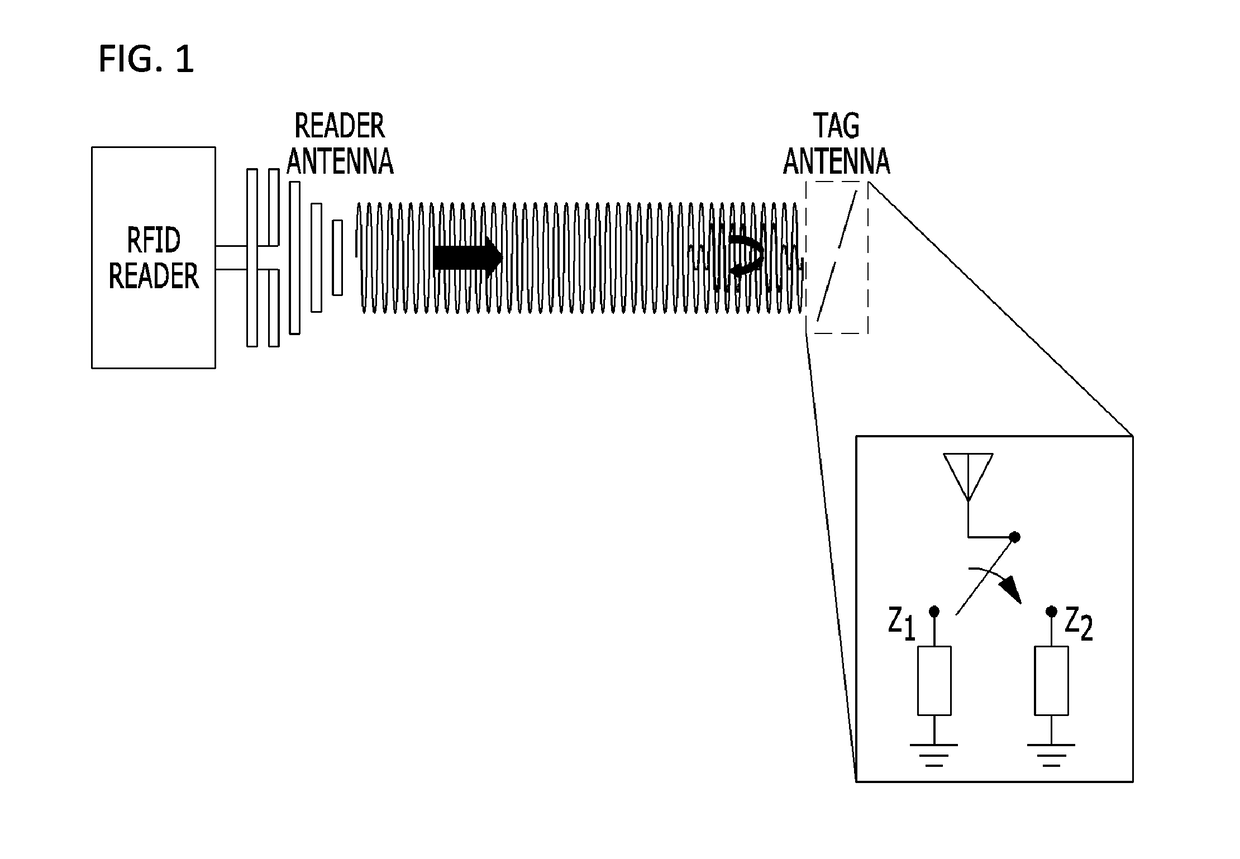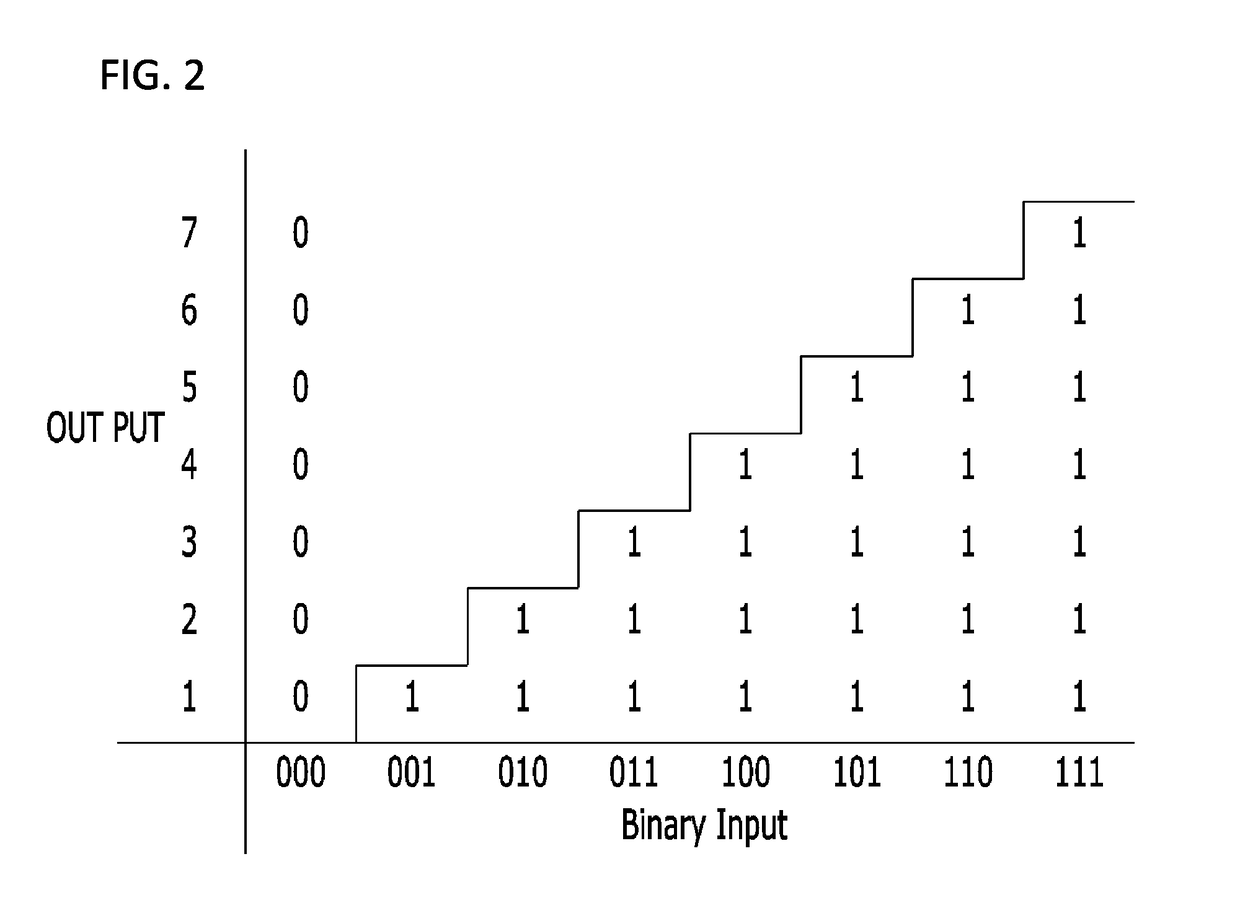RFID tag and method of controlling the same
a radiofrequency identification and tag technology, applied in the field of radiofrequency identification (rfid) tags and the same control method, can solve the problems of inefficiency of data transmission speed of rfid tags, and achieve the effect of improving data transmission speed and recognition range, and high speed
- Summary
- Abstract
- Description
- Claims
- Application Information
AI Technical Summary
Benefits of technology
Problems solved by technology
Method used
Image
Examples
first embodiment
[0047]FIG. 3 is a block diagram illustrating a configuration of an RFID tag according to the present invention.
[0048]First, a general passive RFID tag scatters electromagnetic waves transmitted from an RFID reader and returns tag information to the RFID reader, and to this end, an impedance of a tag antenna varies. The variation of impedance of the tag antenna is achieved by switching an impedance value of a modulator in the tag, and in general, a load impedance of the tag has two states.
[0049]As shown in FIG. 3, an RFID tag according to the embodiment of the present invention includes a tag antenna 300, an impedance matching unit 310, a rectifying unit 320, a power unit 330, a demodulation unit 340, a logic unit 350, a voltage control unit 360, a memory 370 and a reflection coefficient adjusting unit 380.
[0050]In contrast to the above-described general passive RFID tag, the RFID tag according to the present invention returns tag information through the reflection coefficient adjust...
second embodiment
[0072]FIG. 9 is a block diagram illustrating a configuration of an RFID tag according to the present invention.
[0073]As illustrated in FIG. 9, an RFID tag according to the second embodiment of the present invention is largely divided into a tag antenna unit and a tag system unit.
[0074]The tag antenna unit includes a tag reception antenna 900 and a tag transmission antenna 910.
[0075]The tag system unit includes a path control unit 920, an impedance matching unit 930, a rectifying unit 940, a power unit 950, a demodulation unit 960, a logic unit 970, a memory 980, a gain adjusting unit 990, a modulation unit 1000, and a variable amplifying unit 1010. The impedance matching unit 930, the rectifying unit 940, the power unit 950, and the demodulation unit 960 have the same configurations and operations as those described in the first embodiment of the present invention shown in FIG. 3, and thus detailed description thereof will be omitted.
[0076]First, a signal transmitted from the RFID r...
PUM
 Login to View More
Login to View More Abstract
Description
Claims
Application Information
 Login to View More
Login to View More - R&D
- Intellectual Property
- Life Sciences
- Materials
- Tech Scout
- Unparalleled Data Quality
- Higher Quality Content
- 60% Fewer Hallucinations
Browse by: Latest US Patents, China's latest patents, Technical Efficacy Thesaurus, Application Domain, Technology Topic, Popular Technical Reports.
© 2025 PatSnap. All rights reserved.Legal|Privacy policy|Modern Slavery Act Transparency Statement|Sitemap|About US| Contact US: help@patsnap.com



